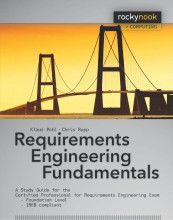Requirements Validation and Negotiation - Principles of Requirements Validation
8 important questions on Requirements Validation and Negotiation - Principles of Requirements Validation
Name the six principles of requirements validation?
- Involvement of the correct stakeholders
- Separating the diagnosis and the correction of errors
- Validation from different views
- Adequate change of documentation type
- Construction of development artifacts that are based on requirements
- Repeated validation
What is validation Principle 1: Involvement of the correct stakeholders?
- Independence of auditor: the author will make use of his or her prior knowledge when reading or reviewing the requirement.
- Internal vs. external auditor: external audit requires a higher degree of effort because it identifies auditors and (potentially) hires them for payment. In addition, external auditors have to become familiar with the context of the system. Use them only if a high level of quality is needed.
What is validation Principle 2: Separating the identification and the correction of errors
- Separating error identification and error correction allows auditors to concentrate on the identification. Measures to correct the errors are taken only after identification measures have been completed.
(Basic Principle)
- Higher grades + faster learning
- Never study anything twice
- 100% sure, 100% understanding
What is validation Principle 3: Validation from Different Views?
- requirements are validated and agreed upon from different perspectives (e.g., by different people)
What is validation Principle 4: Adequate Change of Documentation Type?
What is validation Principle 5: Construction of Development Artifacts?
What is validation Principle 6: Repeated Validation?
Requirements validation should occur mulitple times in the following cases? (among others)
Should occur multiple times in the following cases (among others):
- Lots of innovative ideas and technology used in the system.
- Significant gain of knowledge during requirements engineering.
- Long-lasting projects.
- Very early requirements validation.
- Unknown domain.-Requirements that are to be reused.
The question on the page originate from the summary of the following study material:
- A unique study and practice tool
- Never study anything twice again
- Get the grades you hope for
- 100% sure, 100% understanding
































